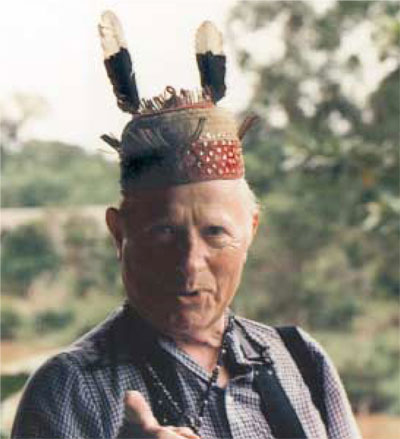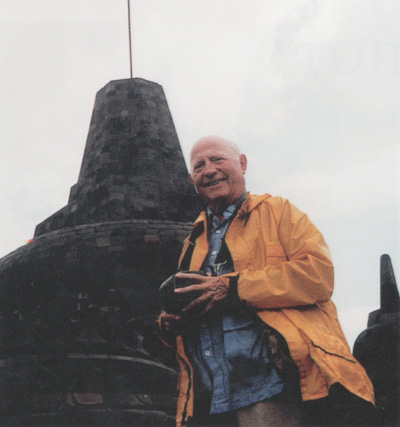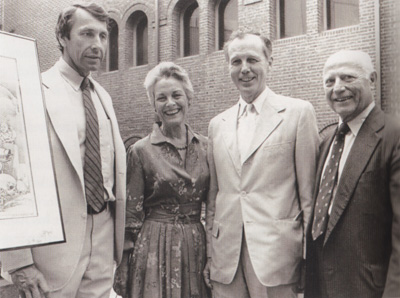
Robert L. Trescher, Esq., opened many doors for individuals and institutions through-out his life. So it is entirely appropriate that his name is honored at the new entrance — the Trescher Entrance — of the University of Pennsylvania Museum of Archaeology and Anthropology. This welcoming space is a powerful reminder of Trescher’s years of service and visionary planning. His work at the Museum, as member and chairman of the board of managers, then the board of overseers, was all about having a vision, implementing it, and opening new doors for the Museum and its community. We are sad that Trescher, who died in April, will not be here to enjoy crossing this threshold and entering the next era, one that would not be as illuminated were it not for his dedication in making the Museum the strong research and public learning institution it is today.
Trescher enjoyed a long career as a lawyer, senior partner, and chairman at the Philadelphia law firm Montgomery, McCracken, Walker, and Rhoads, retiring in 1982 but continuing as counsel. Similarly, he enjoyed a long affiliation with the University of Pennsylvania, beginning as a student (Wharton ’34, Law ’37, and an honorary degree in 1982) and continuing as an influential leader on many administrative service committees, including the university’s board of trustees (1959–2002), chairman (1980–1982), and chairman emeritus (1982–2002) of the Museum’s board of overseers, the Annenberg School, and the law school.
In a very real sense, Trescher is the father of the modern Museum. Without his skill as a leader, the University of Pennsylvania Museum would be a very different institution. Susan W. Catherwood,chairman and new chairman emeritus, explains that Trescher was the “founder of the modern governance structure of the Museum.” In 1981, in the midst of Trescher’s 43 years on the board of trustees, he created the modern board of overseers of the Museum, formerly the board of managers. It was a significant change that created an empowered governance for the Museum that worked proactively with the university, advised the director, and more directly influenced Museum policy and practices. Just as important, the new structure established clear procedures to meet the highest standards of stewardship, both of collections and of the individuals employed to implement strong research and public outreach.

Trescher was passionate about the collection housed by the Museum. Indeed, he was one of the important contributors to the Mainwaring Wing, which was built to preserve the most sensitive and perishable items in the Museum’s collection. He was even more passionate about the people who worked at the Museum. He admired the archaeologists and anthropologists who dedicated their lives to research in the field and to curating the Museum collections. He went on nine tours to Museum field sites organized by the Women ’s Committee, a group he believed was the force that brought the Museum and the public together. He was inspired when visiting Museum scholars in the field (such as Christopher Jones in Guatemala and Honduras; William Davenport in Borneo, Indonesia and Thailand; Harold Dibble at the caves of Spain and France; and David O ’ Connor in Egypt).
Just as Museum scholars inspired Trescher, he was in turn a source of inspiration for the people he worked with. As far back as his student days at Penn, Trescher was a leader and boldly encouraged the people around him. He was president of his class for three of his four years at Wharton and during his entire course of graduate study in law. Adjectives commonly used to describe Trescher are warm, outgoing, and jocular . Says Catherwood, “He just loved people, and they loved him. He expected the best, saw the best and pulled that out of people and encouraged them.” From his long life of service and leadership, it is clear that Trescher also held the highest standards for himself.

Trescher leaves an enduring legacy. With the new main entrance that bears his name, Robert L. Trescher will continue to inspire those who walk through the Museum threshold, bringing the best that they have to offer in continuing the Museum ’s mission of research, understanding, and preservation of the world ’s cultural heritage.
